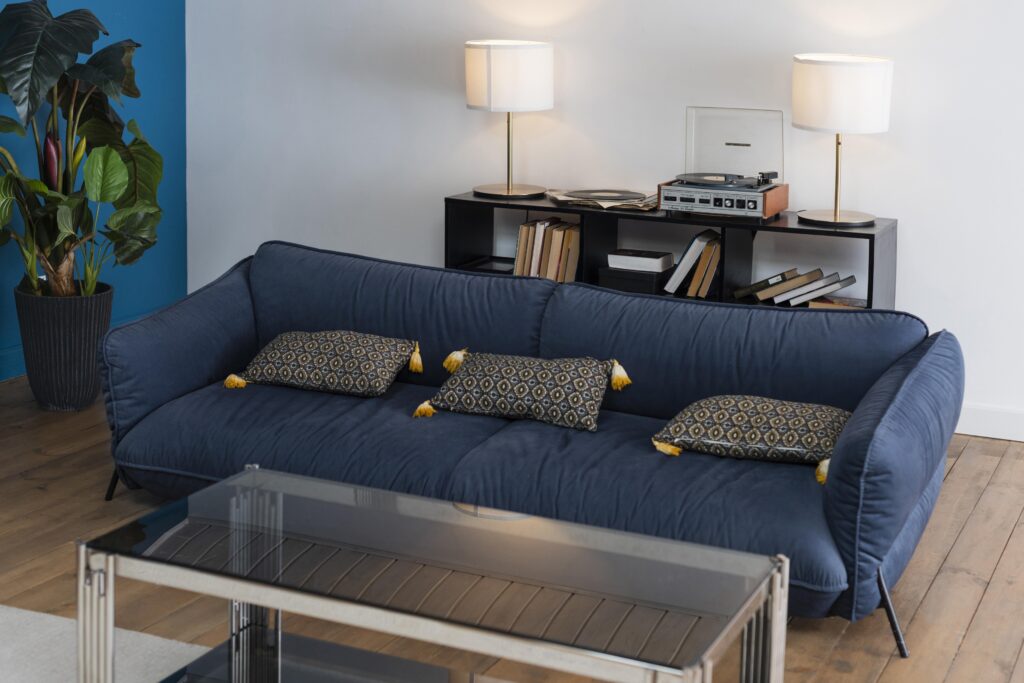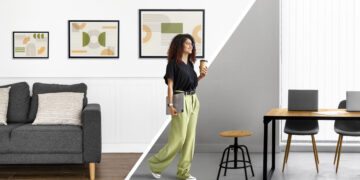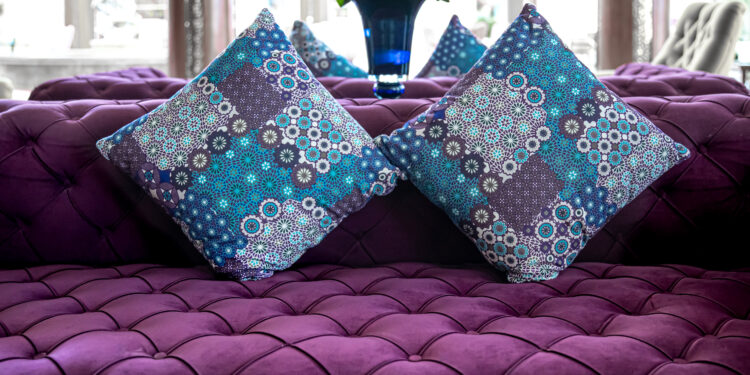Contemporary comfort is not a style so much as a sensation: the way a room softens your shoulders, how a switch feels under your thumb, the hush that falls when a door seals properly. Contemporary comfort mipimprov takes that feeling and makes it actionable. It treats comfort as a series of small, reversible moves—micro-improvements guided by your senses—that add up to environments that feel calm, tactile, and deeply usable. This approach favors testing over tearing down, materials that breathe over surfaces that glare, and controls that are predictable even when the power blinks or the Wi‑Fi lags. It is practical, budget-aware, and designed to meet the realities of rentals, compact homes, and busy workspaces.
What mipimprov means
Mipimprov blends “micro” and “improvement” into a method that focuses on small steps with high sensory payoff. Instead of pursuing a full renovation or chasing trends, you adjust the room where touch, light, sound, and airflow meet the body. The principles are simple: start small and test often, prioritize what the skin, ears, and eyes actually feel, layer elements so they can be tuned, and favor reversible changes. A dim-to-warm bulb shows you more about evening calm than a new chandelier; a rug pad can do more for echo than another decor piece; a door sweep can improve privacy and warmth without a contractor. By approaching comfort as a loop—observe, tweak, live with it, then refine—you build a space that stays responsive as seasons and routines shift.
Trends you can feel
Tactile minimalism is leading the way. The idea is less about owning few things and more about making every surface earn its keep through feel. Bouclé, washed linen, and wool bring low-gloss softness; cork and rubber add warm resilience underfoot; limewash paint diffuses light with a matte depth that reduces eye fatigue. Soft geometry is another shift: rounded corners, pillowed profiles, and curved sconces ease the body’s interactions and cut down on shin-barking edges and harsh glare lines. Bio-based materials—wool blends for throws, hemp and bamboo for textiles, mycelium or wood-fiber acoustic panels—often regulate humidity better than synthetics and feel warmer to the touch because they are less thermally conductive than metals and polished stone.
Comfort-focused technology is getting quieter and more considerate. Low-latency dimmers that avoid flicker, fan-cooled electronics, silent hinges, and soft-close hardware reduce the jitter that comes from sudden noise or light spikes. Color choices are settling near the middle of the spectrum: near-neutrals and gentle, desaturated greens and blues relax the eye because they limit contrast jumps and glare. Micro-zoning is becoming standard in small spaces: a reading chair with a wall wash and a side table creates a “retreat” zone even in a studio, while a standing corner with a soft anti-fatigue mat helps circulation in a home office. These ideas respect how bodies move and rest throughout the day.
Sensory checkpoints
Touch comes first. High-contact points—door handles, drawer pulls, armrests, stair rails—shape your daily experience. Replacing a slippery polished knob with a lightly knurled, powder-coated handle can anchor your grip and feel warmer. A dense rug pad beneath a flat-woven rug adds cushioning without bulk and cuts echo. On seating, a breathable natural-fiber throw or cushion prevents stickiness and helps with temperature regulation, especially in mixed climates.
Light is the second checkpoint. Map where daylight travels across your space over a day, then fill gaps with layered electric light. Ambient light should be broad and indirect; task light should be focused and dimmable; accent light should be soft and low-glare. Dim-to-warm bulbs shift from cooler tones in the day to warmer tones in the evening, syncing better with wind-down routines. Shaded fixtures, wall washers, and bounce lighting off matte surfaces lower glare and strain.
Sound matters more than most people realize. Even slight echo lengthens the time your brain spends parsing speech, which is tiring. Adding soft mass—curtains, upholstered panels, books, and rugs—absorbs reflections, especially in hard, boxy rooms. Door sweeps and weatherstripping reduce leaks that let both noise and drafts in. A felt-lined tray or cable channel keeps chargers and adapters from rattling, and soft-close cabinet dampers take the edge off everyday clatter.
Temperature and airflow are the quiet backbone of comfort. Cross-ventilation beats stagnant air; a ceiling fan on a low, counterclockwise setting creates a gentle breeze that cools without over-drying. Breathable textiles—linen, wool, cotton, Tencel—help your body regulate warmth. Radiant add-ons like a compact panel heater beneath a desk can keep you warm at lower room-wide temperatures. Draft mapping with a candle or incense stick shows where to place a door seal or a heavier curtain.
Scent and air quality round it out. Low-VOC finishes reduce lingering odors and headaches; simple activated charcoal filters and well-chosen plants suited to your light can freshen air without constant attention. Keeping kitchen ventilation filters clean and bathroom fans on timed cycles after showers cuts humidity and stale smells, which is as much about comfort as it is about maintenance.
Room-by-room micro-upgrades
Living rooms benefit from light that flatters the eye. Swap a single harsh overhead for two lamps and a wall wash that lifts light upward. A textured throw and a denser rug pad change how the room feels immediately. Create a small tray within arm’s reach for remotes, glasses, and a cup of tea—this prevents constant reaching and keeps surfaces calmer. If you have a TV, reduce reflections with a slightly darker, matte wall behind it and use a backlight bias strip set to a low, warm tone.
Bedrooms thrive on predictable cues. Dim-to-warm bedside lamps signal evening without blasting the retina, and a dual-layer window setup—sheers for the day and blackout for night—lets you tune light on demand. A mattress topper matched to your sleep position can fix pressure points without replacing the mattress. Cable paths tucked behind a headboard and silent drawer slides keep the room visually and acoustically quiet. Breathable sheets in natural fibers manage temperature better than shiny synthetics, especially if you share the bed.
Kitchens are about grip, sound, and flow. Under-cabinet task lighting reduces shadows on cutting boards. A cork or rubber anti-fatigue mat at the prep zone eases joints during long cooking sessions. Soft-close add-ons for doors and drawers reduce clatter, and a two-level ventilation habit—low for simmering, higher for searing—keeps air clearer without constant roar. Decant only the items you reach for daily; open bins for less-used tools keep the counter uncluttered yet accessible.
Workspaces reward micro-adjustments. Fine-tune seat pan depth, lumbar support, and arm height so the shoulders relax and wrists stay neutral. A soft acoustic backdrop—curtain, felt panel, or a book-filled shelf—behind you mellows echoes on calls. A cable saddle under the desk corrals cords so your feet can move freely, and a small footrest encourages circulation. For lighting, pair a broad ambient source with a low-glare task lamp that has a warmer low setting for late work.
Bathrooms should feel warm and safe. A backlit or warm-LED mirror provides even light for grooming without harsh shadows. Matte grab points—textured bars or wood edges—feel secure when wet. A slatted teak or rubber-backed mat gives non-slip footing that dries quickly. A quiet-close toilet seat and cabinet dampers soften everyday noise. Time the exhaust fan to run a little after showers to reduce humidity spikes that lead to chill and fogged mirrors.
Materials that feel right
Fabrics set the tone. Linen breathes and softens with use; wool regulates temperature and resists odors; Tencel has a cool hand and drape. Paying attention to GSM and weave matters: heavier weights and looser weaves feel more substantial and breathe better. For hard surfaces, cork and rubber offer warm, resilient footing; matte ceramic and honed stone reduce glare and feel calmer to the touch. Limewash paint adds depth and diffuses light in a way flat latex often can’t, helping rooms feel quieter.
Hardware is underrated. A lightly knurled finish gives confident grip without snagging fabric, and powder-coated metal feels warmer and shows fewer fingerprints than mirror-polished chrome. When choosing finishes, think about maintenance: micro-scratches on high-gloss surfaces catch light and can make spaces feel visually busy, while soft-matte and brushed finishes age more gracefully.
Durability is part of comfort. A fabric that pills or a finish that shows water spots demands constant attention. Choosing materials that can be cleaned simply and repaired when needed keeps your space low-stress over time.
Lighting and circadian calm
Color temperature should move with your day. Cooler light in the morning helps alertness; neutral midday keeps color rendering accurate; warmer tones in the evening reduce blue-heavy brightness that can delay sleep. Layering matters more than lumens alone. Aim for wide, indirect ambient light to fill the room, then add focused task lighting and a few low, warm accents. Manage glare by avoiding exposed high-output bulbs at eye level and using shades, diffusers, or bounced light. Keep controls simple: a dimmer at the wall, a tactile switch at the lamp, and presets that work even if the smart hub is offline. The goal is to make the light predictable, not to add apps for their own sake.
Acoustic calm without renovation
Acoustics can be improved with placement and density rather than thick construction. The idea is to shorten the echo time so speech becomes easier to parse and music sounds fuller at lower volumes. Place soft mass where sound first reflects: opposite speakers, along bare side walls, and near hard corners. A thick rug with a dense pad is more effective than a fluffy rug alone. Bookshelves with mixed depths act as diffusers, breaking up slapback echoes. Door sweeps and weatherstripping close the gap at thresholds—the same fix that warms a room also quiets it. Fabric density matters as much as thickness: tightly woven curtains perform better than sheer, loosely woven fabric of the same thickness. Small, reversible choices add up fast.
contemporary comfort mipimprov with feel-first, reversible upgrades in light, touch, sound, and airflow. Practical tips, materials, and room-by-room ideas you can use today.

Tech that serves comfort
Technology belongs in the background. Choose tactile switches and knobs that work without a network connection and add sensors only where they reduce mental load. A quiet-default phone and computer routine—limited notifications, scheduled focus times—lowers ambient stress. For environment sensing, a simple trio of light, temperature, and air-quality readings tells you when to dim, to add a fan, or to open a window. Privacy-first devices that store automations locally let you keep schedules without cloud dependency. Above all, pick tools that make the room calmer when they fail, not noisier.
Budget and impact
Small budgets go far with mipimprov because the focus is on high-impact touchpoints.
- Under $50: dim-to-warm bulbs, door sweeps, rug pads, cable clips, felt pads under furniture, and a dense throw for a chair you use daily.
- $50–$200: a good dimmer, lined curtains, a mattress topper, a compact desk footrest, soft-close hardware, and a few acoustic tiles or a dense wall hanging.
- $200–$800: a quiet, efficient ceiling fan; adjustments to a task chair or a better one if the base is solid; a substantial area rug with pad; modular shelves that double as acoustic treatment.
Score your choices by comfort gain, cost, and reversibility. Often, a mid-priced rug pad outperforms a decor item for day-to-day comfort. A ceiling fan can reshape summer comfort more than increasing the air conditioner’s output. Reversible upgrades protect renters and allow you to keep iterating without regret.
A 7-day mipimprov sprint
Day 1: Walk through each room with a notebook. Note where you squint, shiver, clench your jaw at a clack, or fidget with a handle. Mark the three worst offenders.
Day 2: Fix lighting friction. Add a dim-to-warm bulb where evenings feel harsh. Lower a shade or add a diffuser where glare hits a screen. Reposition a lamp for better bounce light.
Day 3: Improve touch. Add a rug pad under the most-used rug. Replace the slipperiest handle. Add a breathable throw to a chair that runs hot.
Day 4: Soften sound. Install a door sweep on the noisiest doorway. Hang a dense textile on a bare echoing wall. Add felt pads to chair feet.
Day 5: Tune airflow and temperature. Set a ceiling fan to a low, even speed. Use a draft stopper where the candle test showed movement. Swap to a lighter or heavier duvet based on your sleep temperature.
Day 6: Quiet your tech. Reduce notifications to essential. Put a tactile switch on a frequently used lamp. Set your air purifier or fan to a steady low speed rather than cycling.
Day 7: Reset and review. Tidy cords into a cable saddle. Take photos and jot the changes you feel. Plan the next loop with one bigger upgrade if needed, like lined curtains or a fan.
Case study: a small apartment shift
A 450-square-foot studio felt bright but unsettled. The overhead light made evenings stark, the bare floor echoed during calls, and cables snaked underfoot. Over two weekends, the resident swapped in two dim-to-warm lamps and a wall wash that bounced light onto a matte-painted section. A flat-weave rug paired with a dense pad quieted steps and sharpened call clarity. A narrow bookcase behind the desk added diffusion and storage. A door sweep at the entry reduced hallway noise and winter drafts. The kitchen gained a cork mat at the prep zone and under-cabinet lights. Costs stayed under a modest budget, and every change was reversible. The apartment now reads warmer on entry, conversation is easier at lower volumes, and the nightly wind-down starts without effort.
Common mistakes
Over-bright spaces tire the eyes, especially with cool light at night. Shiny finishes everywhere bounce glare and show every fingerprint. Too many materials in one room create visual noise; stick to a small palette with varied textures. Relying only on app-based controls invites failure when Wi‑Fi sputters—keep a manual switch. Ignoring airflow makes both summer and winter feel harder than they need to be. Finally, chasing trends without touch-testing leads to purchases that look good online but feel wrong in daily use.
FAQs
What is mipimprov in one sentence?
It’s a feel-first method of making small, reversible changes to light, touch, sound, and airflow that noticeably improve comfort.
Can I do this in a rental?
Yes. Most upgrades—bulbs, pads, curtains, door sweeps, hardware swaps—are reversible and landlord-friendly.
What are the best quick wins with a small budget?
Dim-to-warm bulbs, dense rug pads, door sweeps, and felt pads under chairs change daily comfort fast.
Are natural materials worth it?
Often, yes. Wool, linen, cork, and wood feel warmer, regulate humidity better, and age gracefully, which reduces maintenance stress.
How do I measure improvement?
Listen for shorter echo, notice fewer squints and shivers, track evening calm with warmer light, and see if you use the space more. Simple observations beat complicated metrics.
What about pets and kids?
Choose tighter weaves, washable covers, and matte finishes. Use rounded edges and stable, low furniture to reduce bumps and snags.
Conclusion
Contemporary comfort mipimprov is about shaping the feel of a room through small, smart moves. By focusing on touch, light, sound, temperature, and air, you create spaces that welcome your body instead of asking it to adapt. Start with one corner and one sense. Swap the bulb that makes evenings harsh, pad the rug that thuds, seal the door that hisses, and add the throw that invites you to sit. Live with it, then adjust. Comfort isn’t a project with a finish line; it’s a rhythm you refine. The payoff is a home or workspace that meets you where you are—calm, tactile, and quietly supportive every day.




















































